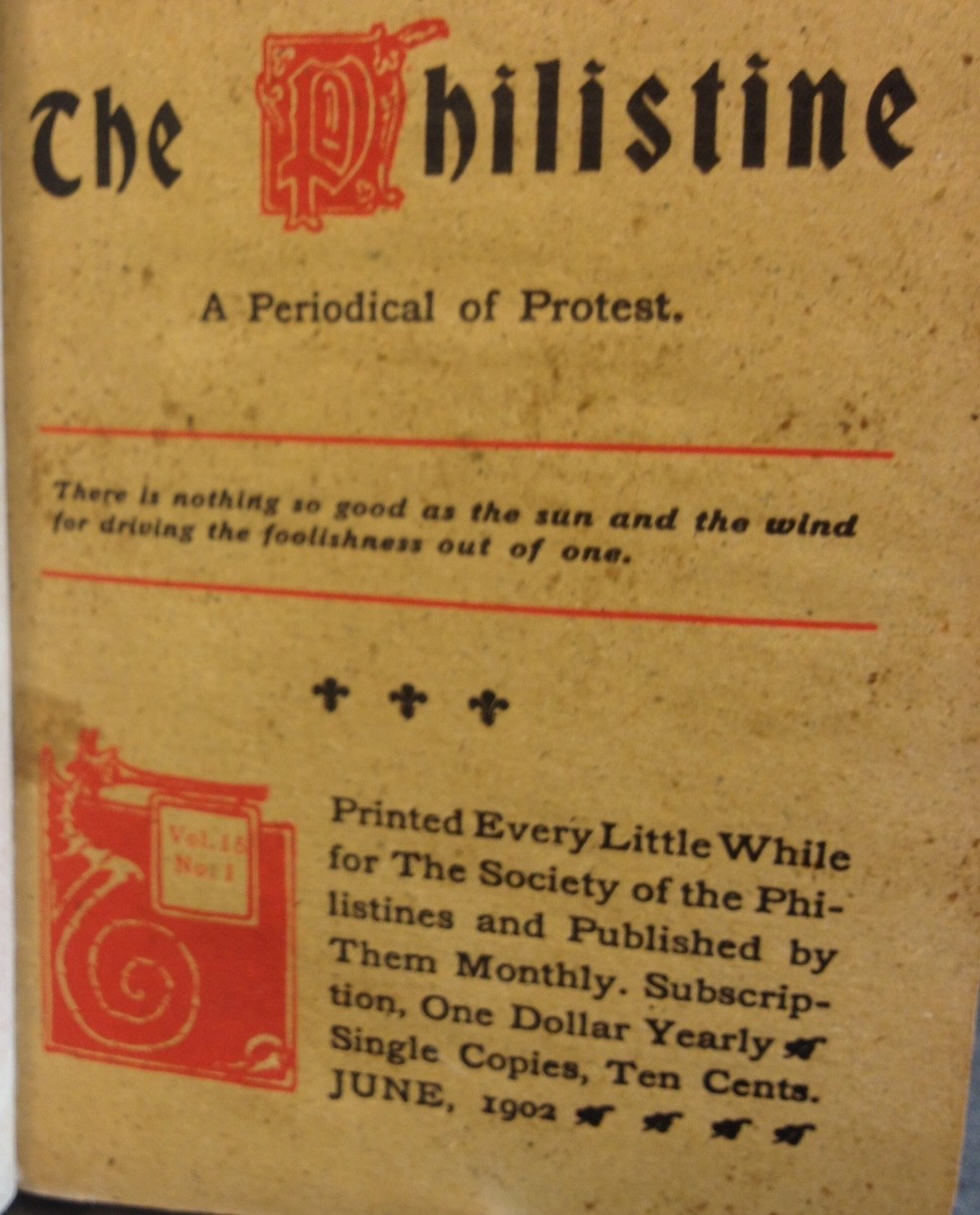The Roycrofters – The Roots of Protest?

Ephemera Detective
Were 20th Century art and antiques the expressions of protest – with Arts & Crafts representing a revulsion to the elaborate styles of the late 19th Century, and Art Deco representing a level of protest elevated even further? A publication purchased recently at a local Public Library Book Sale helps to explain the framework for this thesis, and presents some apparent contradictions.

The small 4 ½” by 6” booklet titled The Philistine sets its tone at an early stage through its subtitle A Periodical of Protest. Dated May 1901, and described as “Printed Every Little While by The Society of the Philistines and published by them…” the booklet carries articles such as Life and Art, About Right Thinking, and Church and State (by Leo Tolstoy).
I looked for signs of ‘protest’. I saw a full-page advertisement by the Henry F. Miller & Sons Piano Company of Boston, another full-page ad for Dorflinger Glass Craft by C. Dorflinger & Sons of New York, and other part-page ads featuring “This refrigerator $8.95; “Cocktails – How to Make Them”; Leadam’s Shoe Trees”; John W. Merriam & Co’s “Honest-Pure Habana Segars” and a host of other consumer opportunities. To judge from the advertisers, middle-class motivators trumped any substantive protest.Eph Detective Sept 2011 Mod II
The publisher offered the chance to subscribe monthly to Little Journeys – to the Homes of Great Musicians at 25 cents a month or $3.00 per year. A full page of offerings headed Sculpture included a BUST, in terra cotta, of William Morris for $5.00; a BAS RELIEF of Walt Whitman (“Round, 9 inches in diameter”) for $3.00; and a PAPERWEIGHT – Roycroft for 50 cents.
Readers will have realized by now that this periodical emanated from The Roycrofters of East Aurora, New York and their leader Elbert Hubbard. Personally, I love the products of the Arts & Crafts movement. The cleanness and purity of line is a delight. However, this piece of ephemera underscores one of the challenges of art and antiques of the 20th Century – the artist needs to communicate his or her ideas while still earning enough to put food on the table.
It appears that The Philistine was one of the means of supporting an art community while at the same time promulgating social ideas. A one-page article titled TIME WAS UP – It was Quit Coffee or Die purports to present a letter from a woman in New Haven who was suffering from serious liver, kidney and heart ailments. She reported that when she stopped drinking coffee, she recovered from her illnesses.
In its way, this piece of ephemera helps to explain why art thought and forms tend to evolve rather than change overnight. Thanks to the Roycrofters for helping to launch that evolution as the world moved forward from 1901.
